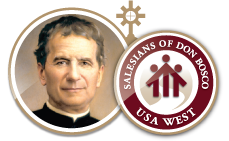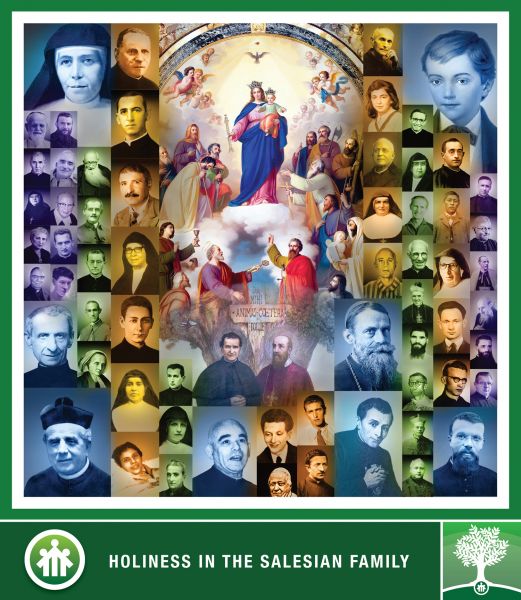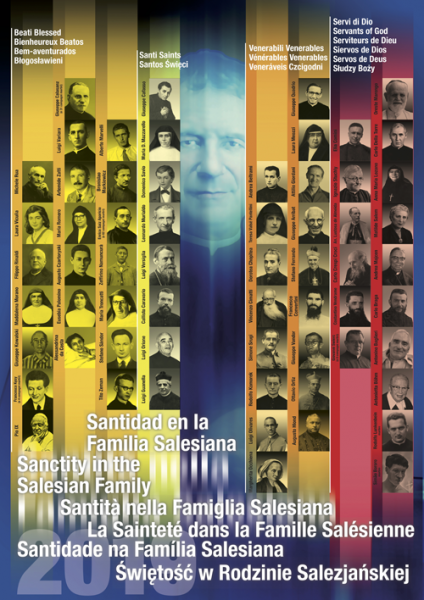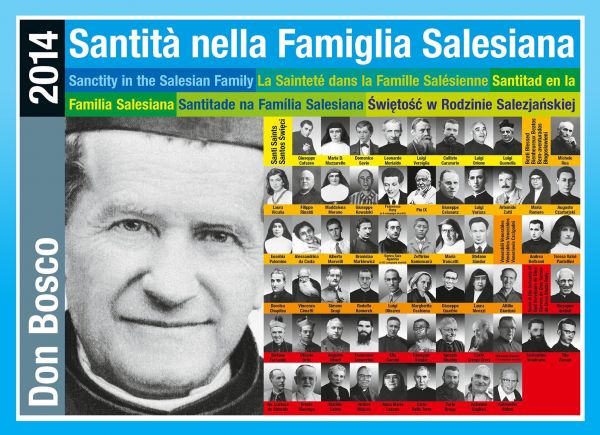Salesian Holiness • Sanctity in the Salesian Family • Salesian Saints • Salesian Blesseds • Salesian Venerables • Salesian Servants of God -- (Updated November 1, 2019)
What is a saint?
In the New Testament the word saints, αγίοις in Greek, pronounced hagiois, refers to those who are members of the Christian community. St. Paul understood that all the baptized believers were saints, holy ones. From Paul’s letter to the community of Philippi we read:
Paul and Timothy, slaves of Christ Jesus, to all the saints in Christ Jesus who are in Philippi, with the bishops and deacons: grace to you and peace from God our Father and the Lord Jesus Christ. (Philippians 1:1-2)
For Paul all the believers, living and dead, were saints. From the same letter to the Philippians we read:
Because of this, God greatly exalted him and bestowed on him the name that is above every name, that at the name of Jesus every knee should bend, of those in heaven and on earth and under the earth, and every tongue confess to the glory of God the Father that Jesus Christ is Lord. (Philippians 2:9-11)
"It’s easy to be a Saint." Don Bosco taught his Salesians and the young people that it was easy to be a saint, "Do the ordinary things in an extraordinary way." He taught that it was not necessary to look for ways to be holy or practice virtue. "Accept what the day brings," he told his young people.
There are saints with a small "s" and Saints with a capital "S". The Church teaches that we are all members of the communion of saints (See Phil 2:9-11 above). The communion of saints is made up of the faithful baptized who are in heaven, those living on the earth, and who are dead, under the earth. All of these people are small "s" saints. Saints with a capital "S" are people who the Church has set aside as outstanding examples of people who have lived the Gospel way and are in heaven.
The Church has developed a process to determine who should be held up as a Saint. The process is called canonization (literally placing a name in a list, a canon, of saints). Today the process is quite complicated and ends with the Pope making an official statement declaring the person a Saint.
- The process starts by declaring that an individual is a Servant of God. The next step study the person’s life and find that the person is Venerable.
- Once this is done the Church conducts a very intense investigation of the person’s life and holiness. The person must be found have lived a very holy and exemplary life.
- If this is true and certain miracles can be attributed to the intersession of the person he or she is declared Blessed.
- A liturgy is written to honor the person and that liturgy maybe celebrated by people associated with the Blessed.
- The last step of the process is to declare that the person is a Saint. A Saint is honored with a liturgy that can be celebrated by the whole Church.
Why all this fuss? Shouldn’t it be enough to follow and imitate Jesus? Why the Saints? The saints never take the place of Jesus in honor or in importance. We look to the Saints as people like ourselves who lived their lives in response the Gospel and can serve as examples for us.
We invite you to read about some of the Salesian Saints presented here.
2019 Salesian Holiness Poster
(Download high resolution image)
2018 Salesian Holiness Poster
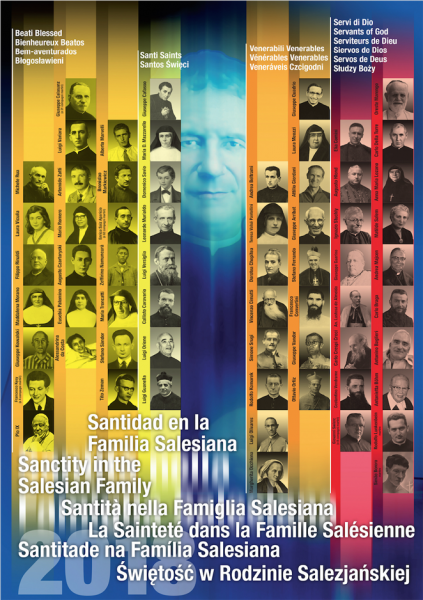
(Download high resolution image)
